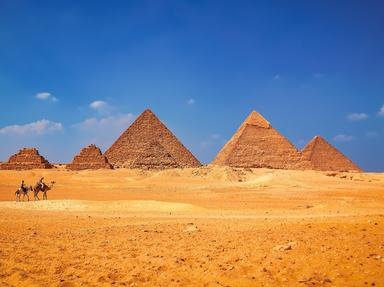Quiz Answer Key and Fun Facts
1. In ancient times, how many branches of the Nile River formed the Nile Delta in Egypt? Was it just co-incidence that the number was considered to be sacred?
2. There are many words that are used to describe the shape of a delta. Which of the following is used to describe the Nile Delta?
3. What is the proper term for the streams that branch off from the Nile River to form the Delta?
4. What is the largest city in the Nile Delta today?
5. Since the completion of the Aswan Dam, which has helped to control the annual flooding of the Nile River, the Nile Delta is not nearly as fertile as it was in ancient times.
6. Which branch in the Nile Delta has an important archaeological discovery named after it?
7. Which kingdom of ancient Egypt was founded in the area of the Nile Delta?
8. Which ancient city, located on the Pelusiac branch of the Nile, was Egypt's capital from approximately 1783-1550 BC?
9. Which of the following animals, that lived in the Nile Delta area during ancient times, no longer inhabits the region?
10. The Valley of the Kings is the only archaeological site located in the Nile Delta.
Source: Author
ponycargirl
This quiz was reviewed by FunTrivia editor
agony before going online.
Any errors found in FunTrivia content are routinely corrected through our feedback system.
